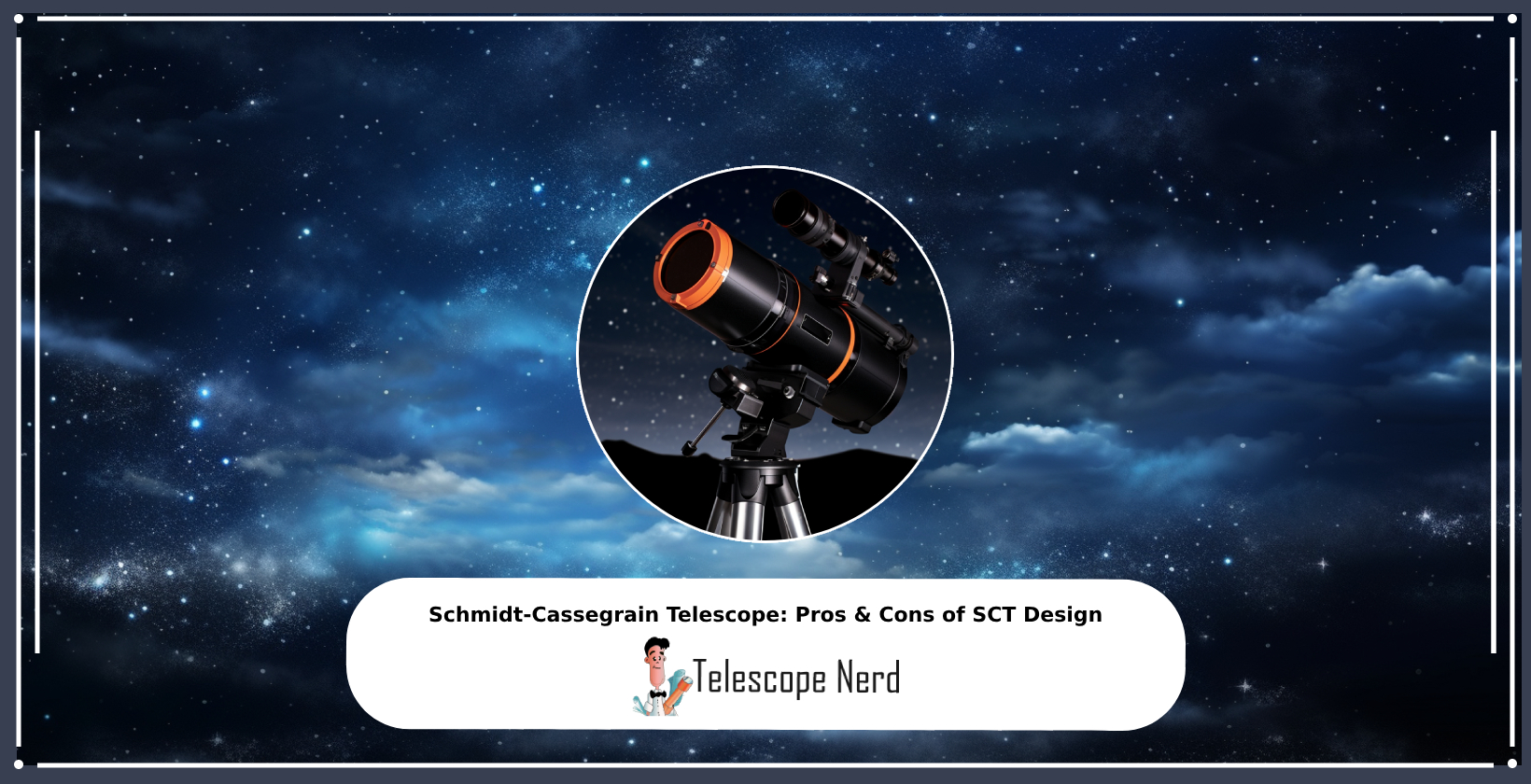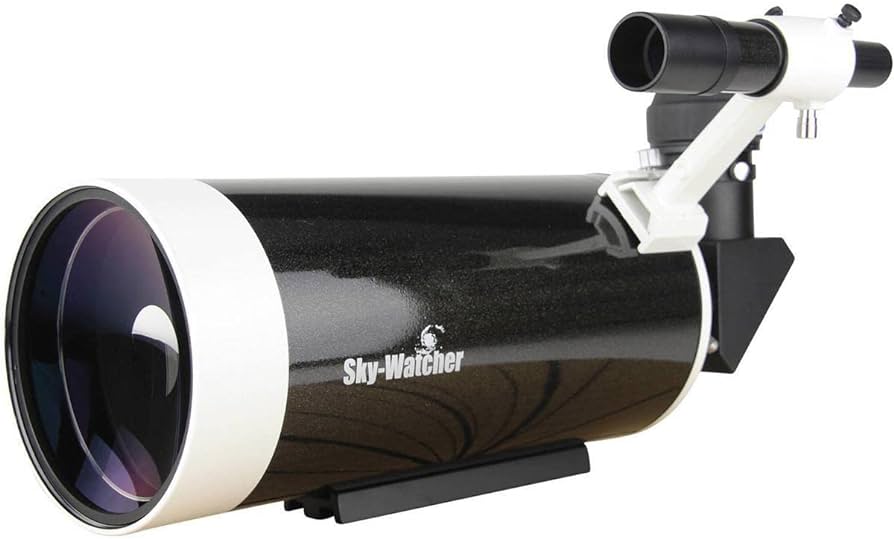Maksutov Cassegrain and reflector telescopes differ in their optical designs and resulting image quality. The Maksutov Cassegrain combines lenses and mirrors for a compact design and sharp images, while reflector telescopes use mirrors for cost-effectiveness and light-gathering ability.
Each type has its own advantages based on specific observing needs and preferences. When choosing between a Maksutov Cassegrain and a reflector telescope, it’s essential to understand the strengths and weaknesses of each type. Both offer unique features that cater to different astronomers’ requirements, from portability and ease of use to light-gathering capabilities and image clarity.
By comparing these two popular telescope options, you can make an informed decision based on your observation goals and preferences.
Design
When it comes to telescopes, understanding the design is crucial in choosing the right instrument for viewing the wonders of the universe. Let’s delve into the design aspects of two popular types – Maksutov Cassegrain and Reflector Telescopes.
Maksutov Cassegrain Telescope
The Maksutov Cassegrain Telescope comprises a thick meniscus lens at the front and a corrector lens near the focal point to eliminate spherical and chromatic aberrations.
Reflector Telescope
The Reflector Telescope uses a large concave mirror to gather light and reflect it to a smaller mirror, redirecting the image to the eyepiece.
Optical Components
Maksutov Cassegrain and Reflector telescopes are popular among amateur astronomers. Let’s delve into their optical components:
Maksutov Cassegrain Telescope
Maksutov Cassegrain telescopes use corrector plates and mirrors to achieve a compact design.
Reflector Telescope
Reflector telescopes utilize mirrors to gather and focus light for viewing celestial objects.
Aperture And Light Gathering
Comparing Maksutov Cassegrain and Reflector telescopes, the aperture and light gathering abilities vary. Maksutov Cassegrains have smaller apertures, limiting light capture, whereas Reflectors boast larger apertures, ideal for better light gathering, especially for deep-sky observations. The difference in performance stems from the telescope’s design and objective size.
Maksutov Cassegrain Telescope
A Maksutov Cassegrain telescope is a type of compact and versatile telescope that combines the design features of a spherical mirror and a correcting lens. The telescope utilizes a front meniscus lens and a concave primary mirror to fold the light path back on itself, resulting in a compact and portable instrument.
Maksutov Cassegrain telescope features:
- Compact design
- Portability
- Versatility
The Maksutov Cassegrain telescope is known for its excellent image quality, making it ideal for astrophotography and observing celestial objects in detail. It offers a higher focal length compared to other telescopes of the same size, which results in higher magnification capabilities.
Reflector Telescope
A reflector telescope, also known as a Newtonian telescope, uses a large primary concave mirror to reflect and focus light onto a secondary mirror, which then directs it towards the eyepiece or camera. This type of telescope is popular among amateur astronomers due to its affordability and ability to gather a substantial amount of light.
Reflector telescope features:
- Affordability
- Light gathering capability
- Good for deep-sky observation
The reflector telescope offers a wide field of view, making it suitable for observing larger celestial objects like galaxies and nebulae. The primary mirror’s larger size allows for a greater amount of light collection, resulting in brighter and more detailed views of celestial objects.
When it comes to comparing Maksutov Cassegrain and reflector telescopes, one crucial aspect to consider is their aperture and light gathering capabilities.
Aperture:
The aperture of a telescope refers to the diameter of its primary mirror or lens. A larger aperture allows more light to enter the telescope, resulting in brighter and more detailed images. Both Maksutov Cassegrain and reflector telescopes come in various aperture sizes, ranging from a few inches to several feet.
Light gathering:
The light gathering capability depends on the aperture size of the telescope. A larger aperture collects more photons from celestial objects, increasing the overall brightness and level of detail in the observed image. Therefore, a larger aperture is beneficial for observing faint objects and capturing more light for astrophotography.
In conclusion, the Maksutov Cassegrain telescope’s compact design and excellent image quality make it a preferred choice for portable astrophotography and detailed observations. On the other hand, the reflector telescope’s affordability and light-gathering capability make it a popular choice among amateur astronomers for observing larger celestial objects. Ultimately, the choice between the two depends on individual preferences and intended use.

Credit: www.telescopenerd.com
Focal Length And Magnification
Maksutov Cassegrain and reflector telescopes have different focal lengths and magnifications, affecting their performance. The Maksutov Cassegrain design offers a longer focal length and higher magnification, resulting in crisp, detailed images. On the other hand, reflector telescopes have a shorter focal length and lower magnification, providing a wider field of view.
Choose the telescope that suits your specific observing needs.
When it comes to choosing a telescope, understanding the focal length and magnification is crucial. Let’s delve into how Maksutov Cassegrain and reflector telescopes differ in terms of their focal length and magnification.Maksutov Cassegrain Telescope
A Maksutov Cassegrain telescope typically has a longer focal length, which results in higher magnification capabilities. This design allows for a narrower field of view but offers impressive detail when observing distant celestial objects. The long focal length enables Maksutov Cassegrains to achieve higher magnification without the need for excessively long eyepieces.
Reflector Telescope
On the other hand, a reflector telescope often comes with a shorter focal length compared to a Maksutov Cassegrain telescope. While this may result in lower magnification potential, reflectors compensate by offering a wider field of view, making them ideal for observing large celestial objects such as galaxies and nebulae.
Image Quality
When it comes to choosing a telescope, the image quality is a crucial factor. Whether you’re an amateur astronomer or a seasoned stargazer, understanding the differences between Maksutov Cassegrain and Reflector telescopes in terms of image quality can help you make an informed decision.
Maksutov Cassegrain Telescope
The Maksutov Cassegrain telescope is known for its exceptional image quality. Its design, featuring a folded optical path and a corrector lens, results in minimal aberrations and high contrast images. This telescope effectively corrects spherical and chromatic aberrations, delivering sharp and detailed views of celestial objects. The closed optical tube design also minimizes thermal disturbances, further enhancing image clarity and sharpness.
Reflector Telescope
Reflector telescopes offer excellent image quality, particularly at lower magnifications. Their simple yet effective design uses mirrors to gather and reflect light onto the eyepiece, resulting in crisp and contrast-rich images. With their large aperture and minimal optical elements, reflector telescopes are well-suited for deep-sky observations, providing stunning views of galaxies, nebulae, and star clusters. However, they may exhibit some level of coma and astigmatism towards the edge of the field of view.

Credit: www.amazon.com
Portability And Ease Of Use
When it comes to selecting a telescope, portability and ease of use play a crucial role in ensuring an enjoyable stargazing experience. Both Maksutov Cassegrain and Reflector telescopes offer unique advantages in terms of their design and functionality.
Maksutov Cassegrain Telescope
The Maksutov Cassegrain telescope is renowned for its compact size and portability, making it an excellent choice for astronomers on the move. With its sleek and lightweight design, this telescope is easy to set up and transport, allowing for hassle-free observation sessions in various locations.
Besides its portability, the Maksutov Cassegrain telescope boasts user-friendly features that make it an ideal option for beginners or those who prefer a hassle-free stargazing experience. Equipped with a built-in flip mirror, this telescope allows for easy navigation between observing and imaging modes without the need for additional accessories or complex adjustments.
Additionally, the Maksutov Cassegrain telescope offers a long focal length in relation to its compact size, resulting in high magnification and exceptional image clarity. This feature allows astronomers to observe celestial objects in intricate detail, making it a joy to explore the wonders of the universe.
Reflector Telescope
On the other hand, the Reflector telescope is celebrated for its versatility and affordability, catering to a wide range of stargazers. Although slightly bulkier than the compact Maksutov Cassegrain, the Reflector telescope remains relatively lightweight and can be transported without much difficulty.
With its simple and straightforward design, the Reflector telescope offers an intuitive user interface, making it accessible to both beginners and experienced astronomers. Setting up this telescope is a breeze, allowing users to focus their time and energy on exploring the night sky rather than getting bogged down by complicated assembly instructions.
Furthermore, the Reflector telescope’s large primary mirror captures plenty of light, providing bright and clear images of celestial objects. This enhanced light-gathering capability allows for excellent viewing of faint deep-sky objects such as nebulae and galaxies, making it an ideal choice for stargazers interested in observing the wonders of deep space.
| Maksutov Cassegrain Telescope | Reflector Telescope | |
|---|---|---|
| Portability | Compact and lightweight | Slightly bulkier but still relatively lightweight |
| Ease of Use | User-friendly features and built-in flip mirror | Simple and straightforward design |
| Magnification | High magnification due to long focal length | Excellent viewing of faint deep-sky objects |
Conclusion
In conclusion, both the Maksutov Cassegrain and Reflector telescopes offer portability and ease of use, catering to different preferences and requirements. The Maksutov Cassegrain excels in compactness, hassle-free operation, and high magnification, while the Reflector telescope provides versatility, affordability, and excellent deep-sky observation capabilities. Whether you prioritize portability or specific observational interests, choosing between these two telescopes ultimately depends on your personal needs and preferences.
Price Range
Price Range: Understanding the cost differences between Maksutov Cassegrain and Reflector Telescopes.
Maksutov Cassegrain Telescope
Maksutov Cassegrain telescopes typically range from $500 to $3000.
Reflector Telescope
Reflector telescopes generally cost between $200 to $1500.
Factors such as aperture size and additional features affect the final price.
“` In a WordPress post, the section would render as: Price Range: Understanding the cost differences between Maksutov Cassegrain and Reflector Telescopes. ### Maksutov Cassegrain Telescope Maksutov Cassegrain telescopes typically range from $500 to $3000. ### Reflector Telescope Reflector telescopes generally cost between $200 to $1500. Factors such as aperture size and additional features affect the final price.
Credit: study.com
Frequently Asked Questions For Maksutov Cassegrain Vs Reflector Telescopes
What Are The Main Differences Between Maksutov Cassegrain And Reflector Telescopes?
A Maksutov Cassegrain uses a meniscus lens and a corrector plate, resulting in a longer focal length and compact design. In contrast, a Reflector telescope uses mirrors to focus light, providing a wider field of view and better light-gathering capabilities.
Which Telescope Type Is Best For Planetary Observation And Deep Space Objects?
Both telescope types have their strengths. Maksutov Cassegrains are great for planetary observation due to their long focal length and high contrast views. Reflectors, on the other hand, excel at capturing deep space objects due to their wider aperture and light-gathering abilities.
What Are The Key Considerations When Choosing Between These Two Telescope Types?
Consider factors such as portability, cost, and intended use. Maksutov Cassegrains are more compact but tend to be pricier, while Reflectors offer larger apertures and lower cost but can be bulkier. It ultimately depends on individual preferences and observing goals.
Conclusion
To sum it up, both Maksutov Cassegrain and reflector telescopes have their own unique advantages and drawbacks. Maksutov Cassegrains offer a compact design and excellent image quality, while reflectors provide a larger aperture and more affordability. Ultimately, the choice between the two depends on your personal preferences, budget, and observing needs.
So, make sure to carefully evaluate these factors before making your final decision. Happy stargazing!



